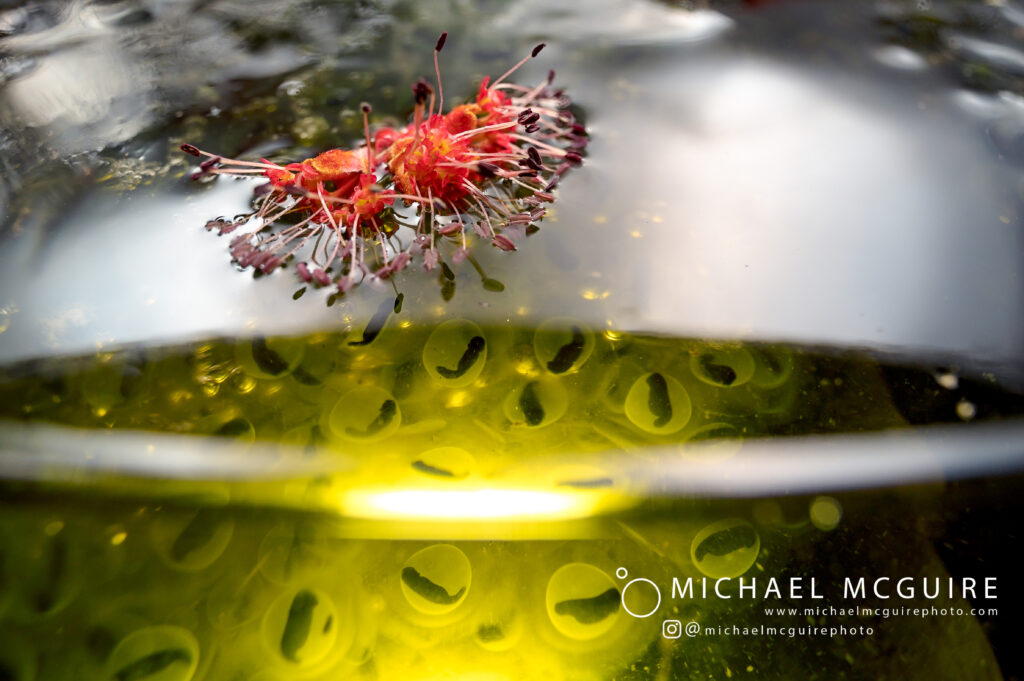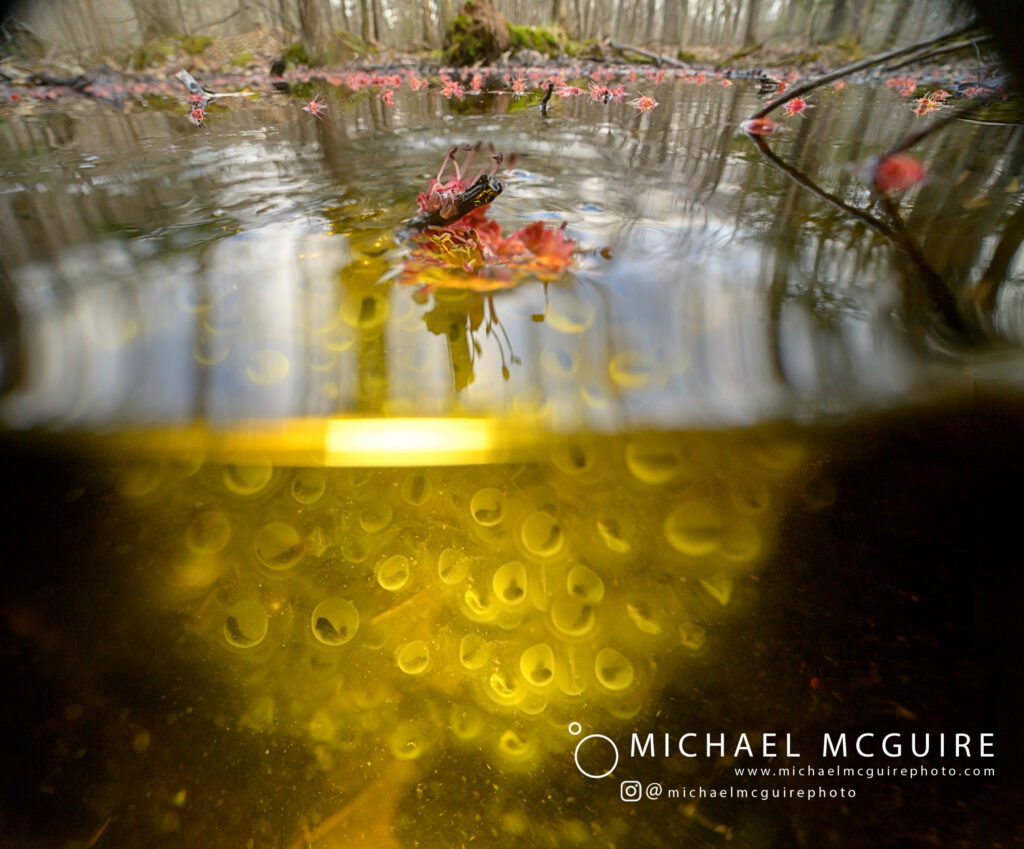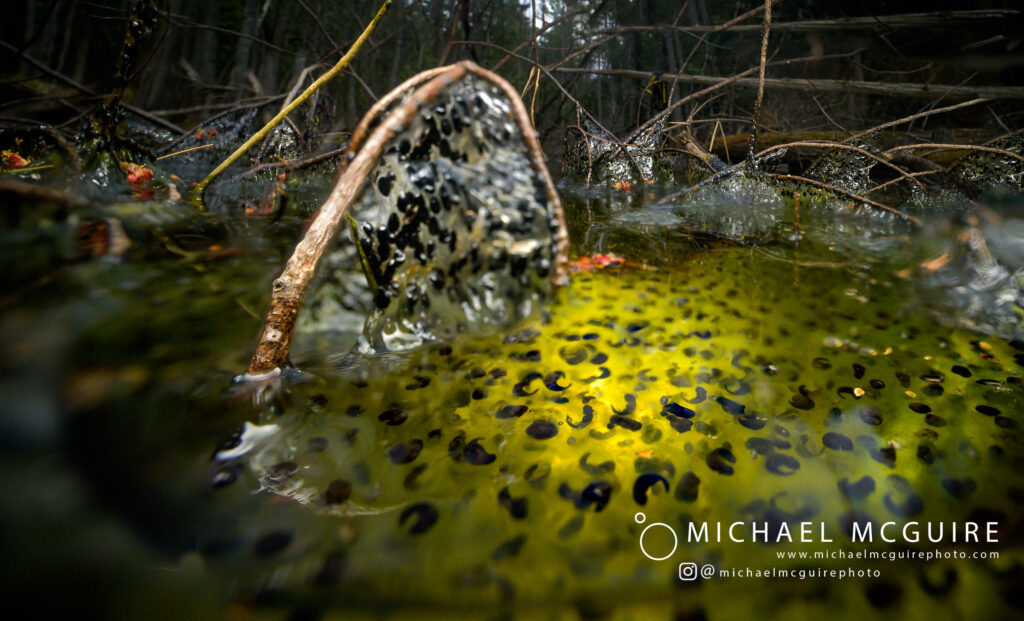Michael McGuire is a recent graduate of UVM’s Wildlife and Fisheries Biology Program. He is a talented photographer that has given us a frog’s eye view of the spring migration. Check out more of this work at michaelmcguirephoto.com.
Michael writes, “The beginning of spring is cold and appears to be lifeless. The snow has stopped falling and has been replaced with cold April rain. Though many of us wait for those showers to bring May flowers, amphibians are mobilizing in the hundreds under our feet. They emerge out of their winter burrows and travel to temporary pools formed on the forest floor to mate and lay their eggs. This brief event occurs every year almost like clockwork with temperatures above freezing and sustained nighttime rain.”
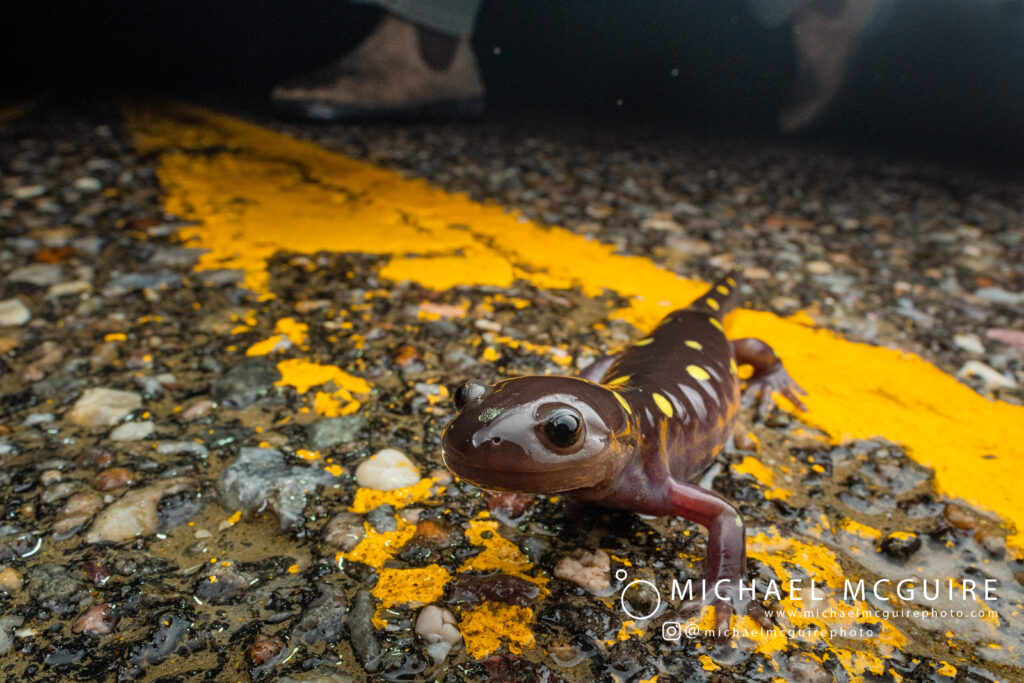
“Regardless of the political climate, the color shirt you wore that day or the presence of a global pandemic. In fact, the reality of most of us being holed in our houses spells good things for these slimy critters. Each year many are killed on the roads by cars during that warm April rain. Since the majority of us have had nowhere to go, amphibian populations will get a peaceful respite from the threat of vehicles. An unlikely silver lining I suppose.“
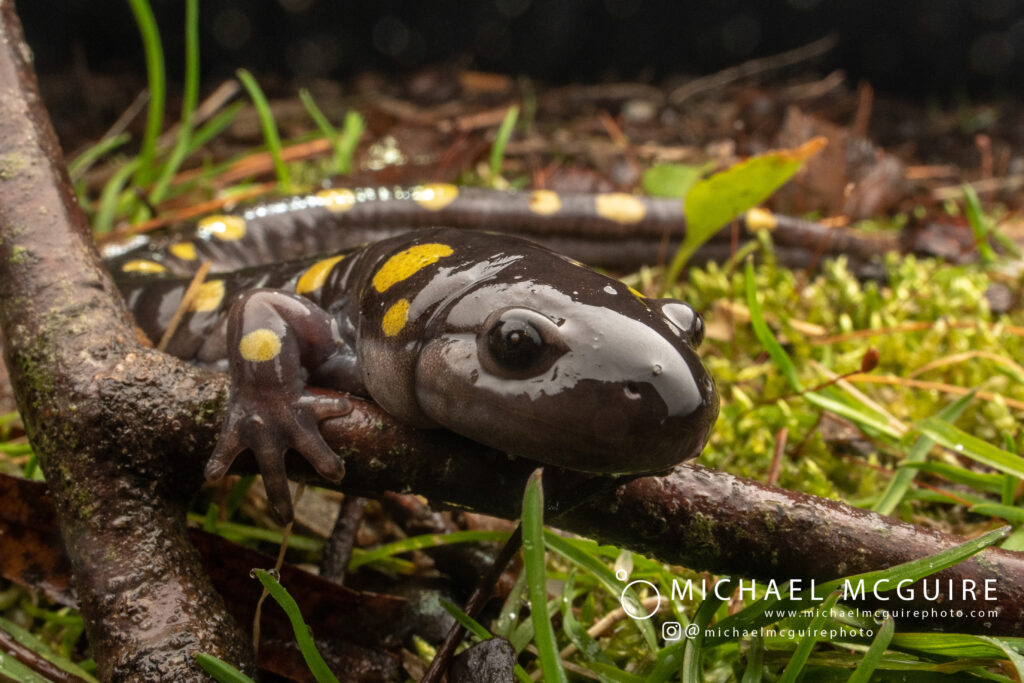
“The world of the vernal pool is alien. It is a world free of fish, a temporary oasis for larval insects and developing amphibians. These ephemeral ponds show us the beauty and fleeting ecology of some of the most secretive creatures.”
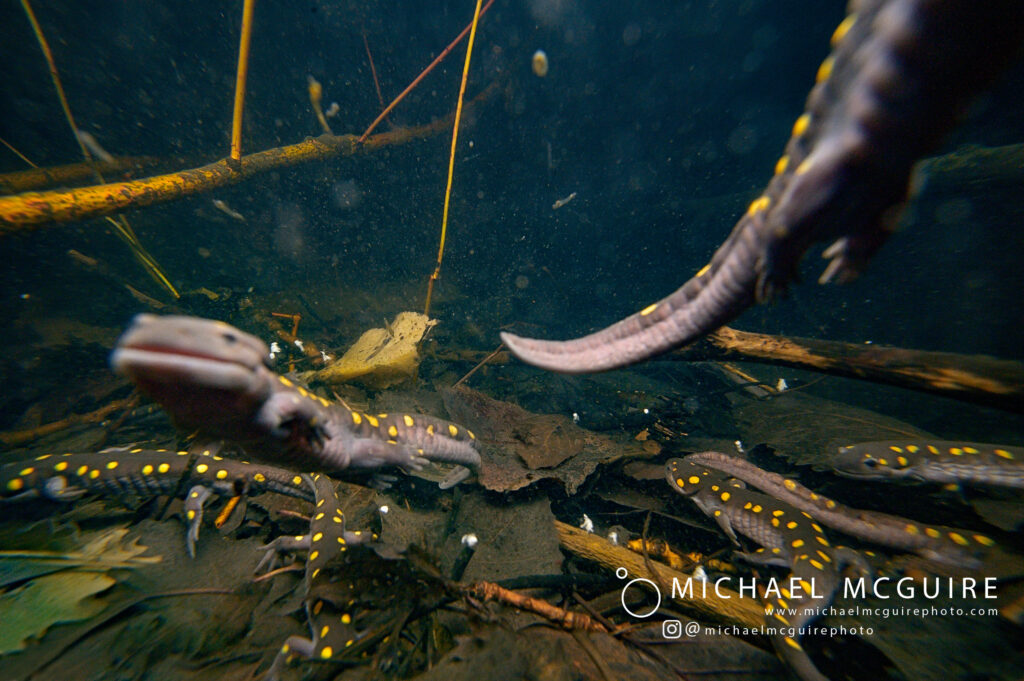
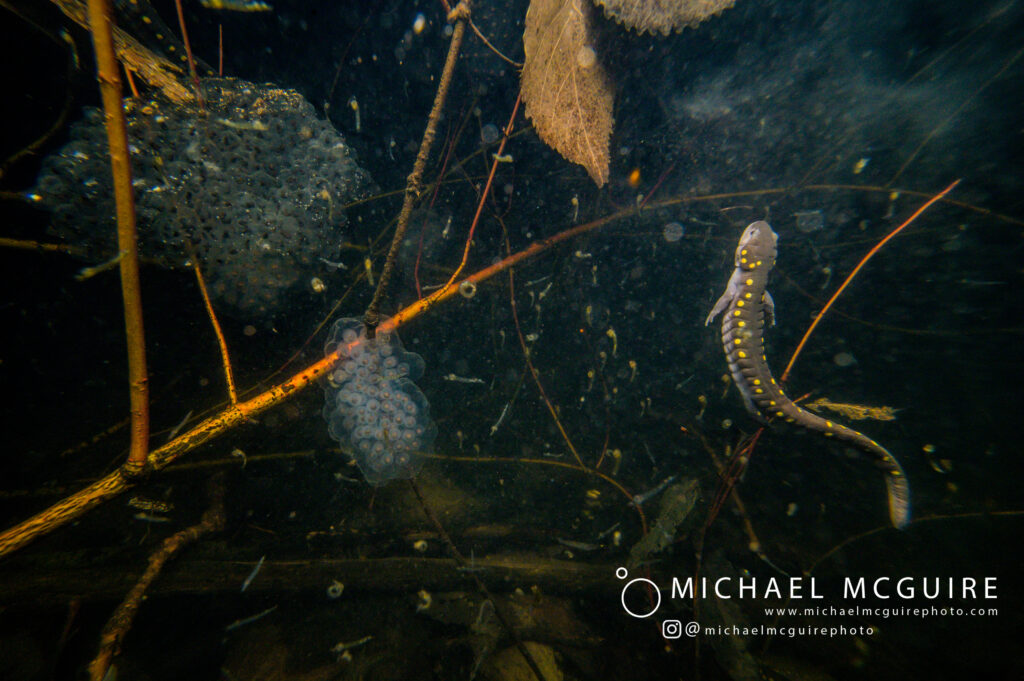
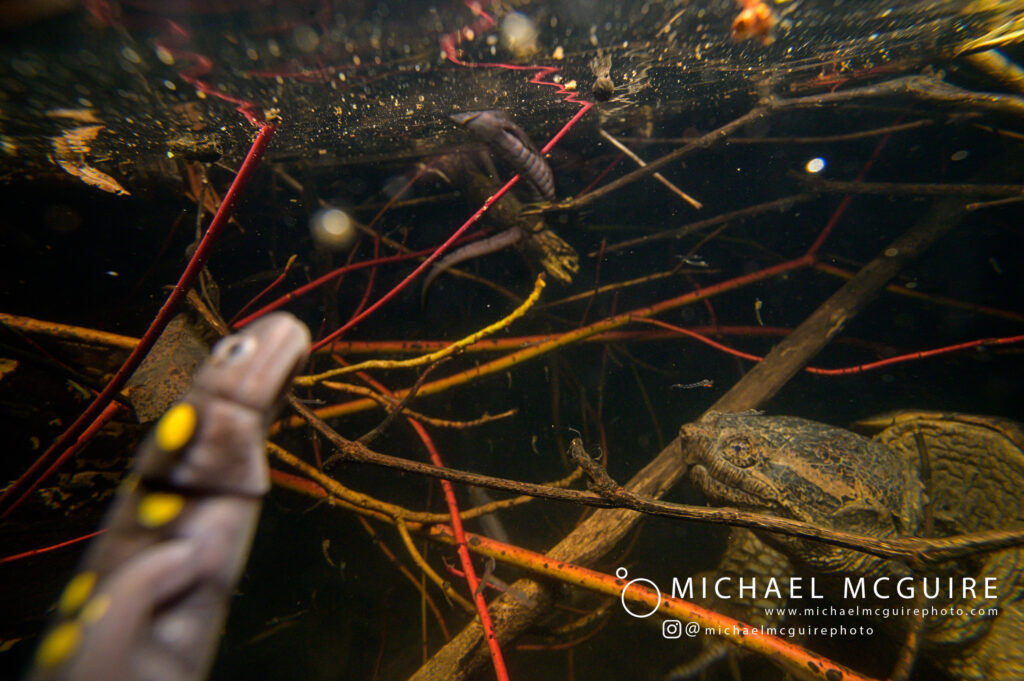
“They show us a symbiotic relationship between larval spotted salamanders and a species of algae. These algae develop within the egg turning it green and feed off the waste of the developing amphibian, while the larvae gets the necessary oxygen through the algae’s photosynthesis. There is beauty and complexity in the smallest things, despite the uncertainty of current events, enjoyment in nature’s hidden gems fills us with joy and hope for a better tomorrow.“
